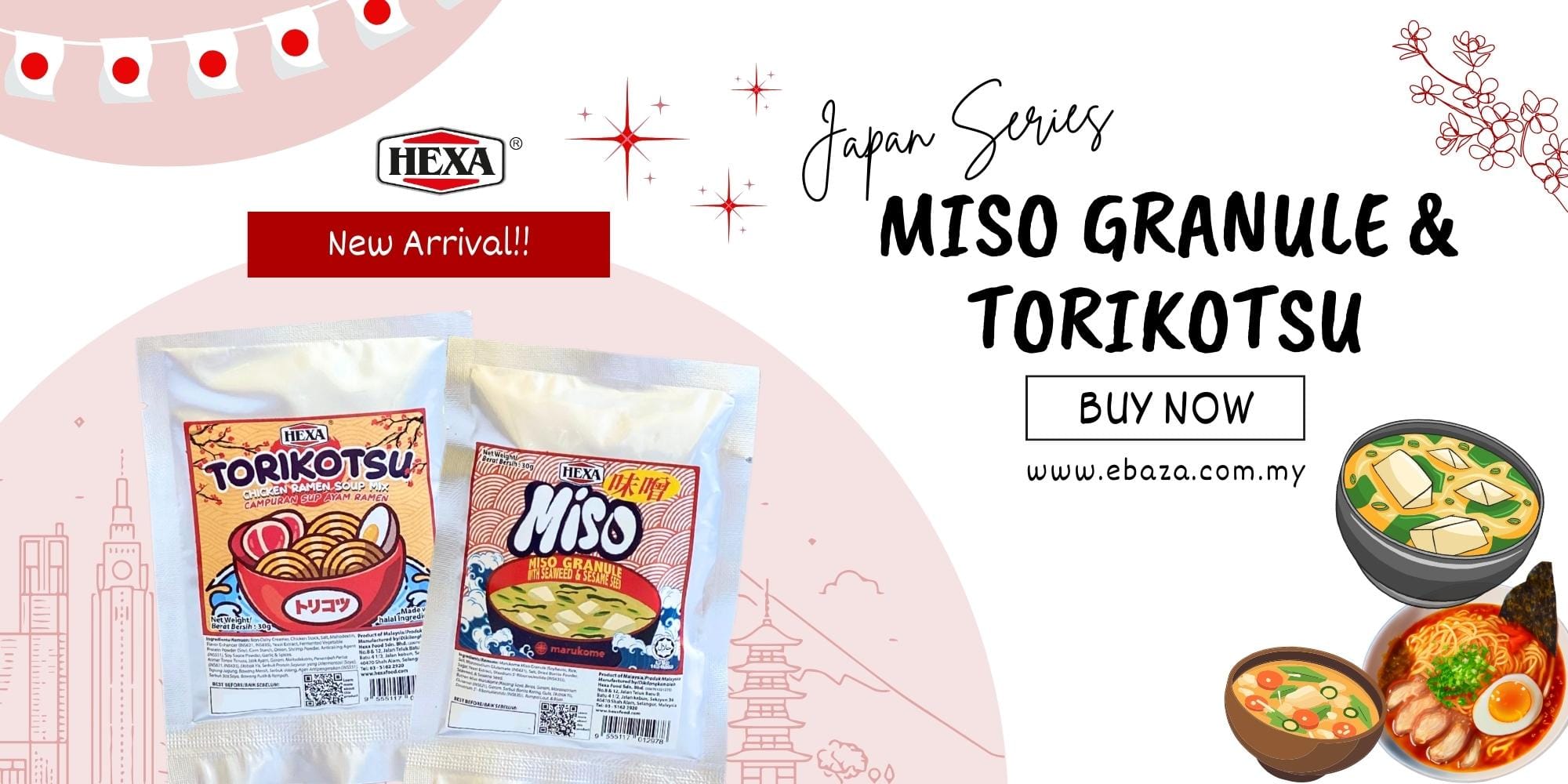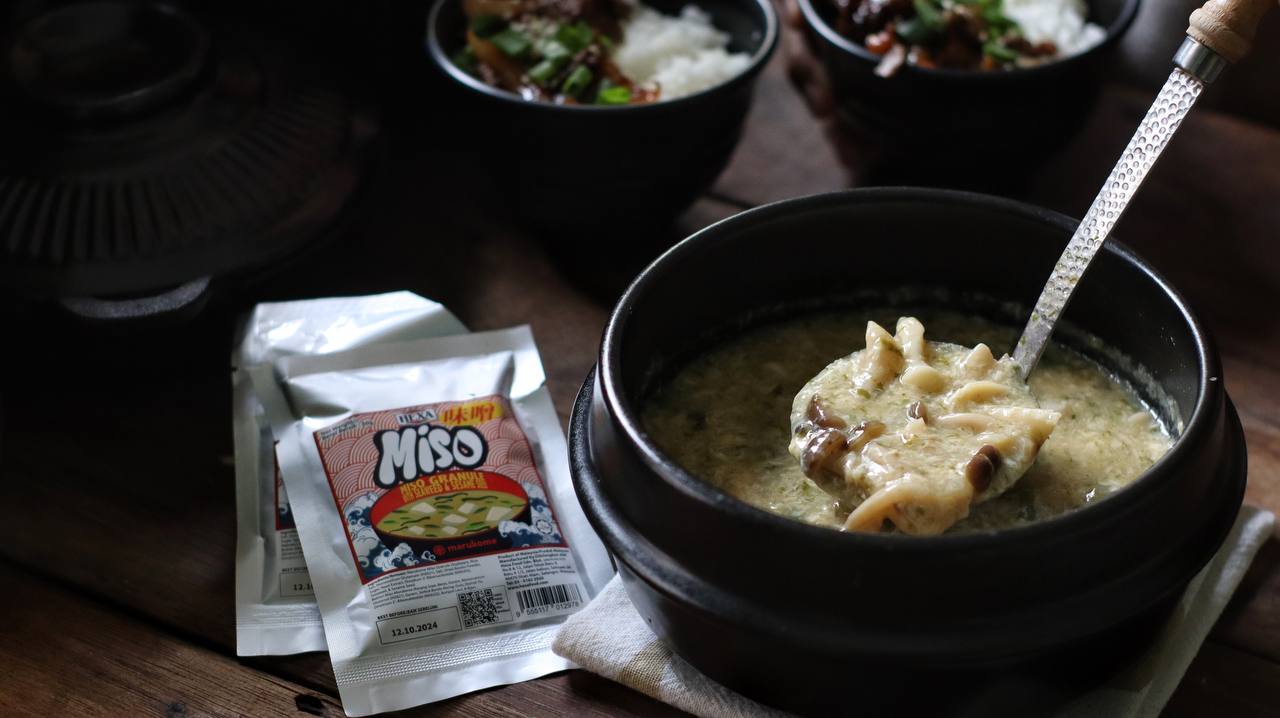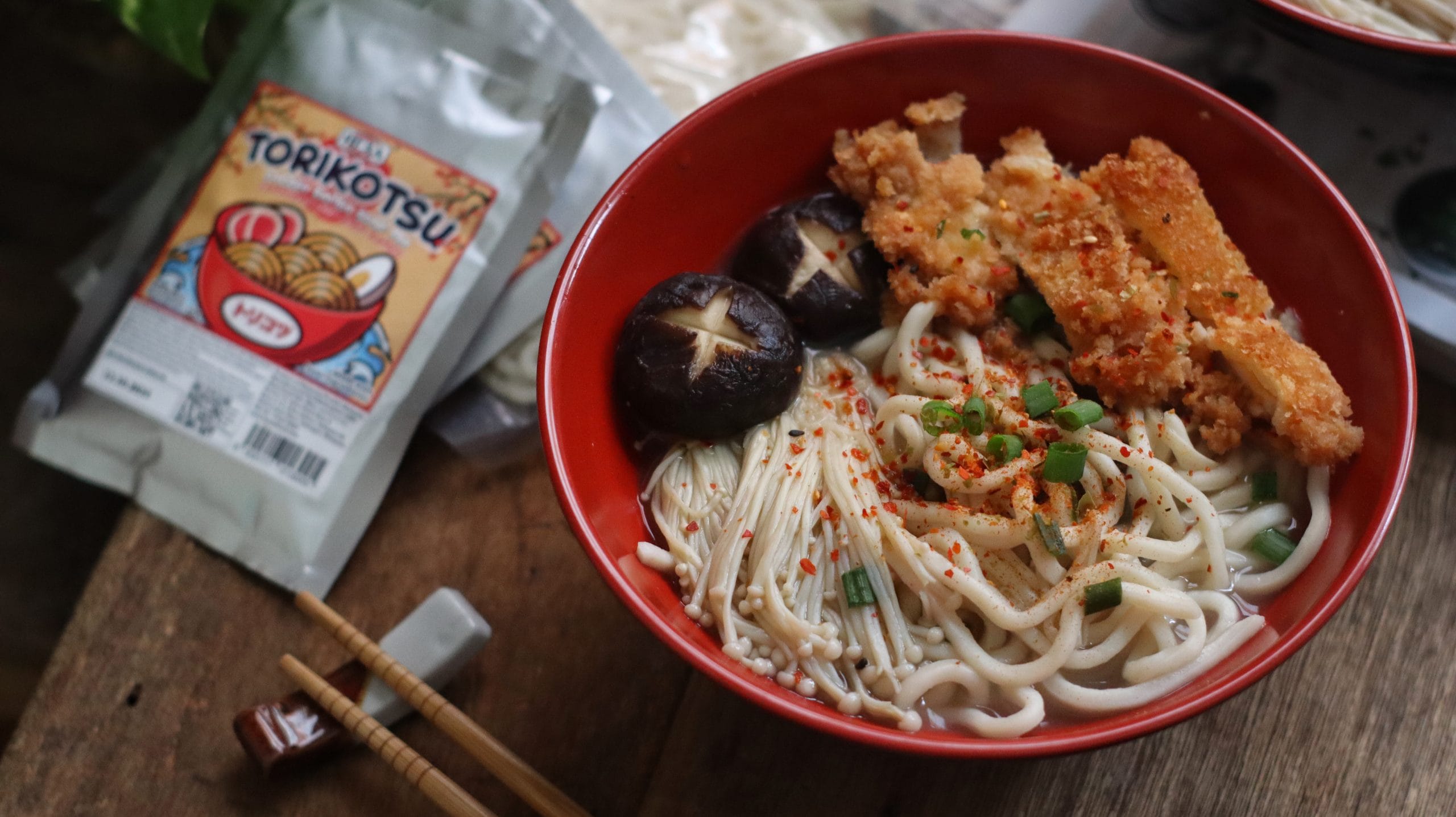
Product Introuduction
Craving a bowl of Japanese ramen or Vietnamese pho but don’t have hours to cook broth from scratch?
With HEXA’s Asian Soup Mix Bundle, you can now enjoy authentic flavors in just minutes!
This combo includes:
✨ HEXA Miso Granule with Seaweed & Sesame Seed (30g)
✨ HEXA Torikotsu Chicken Ramen Soup Mix (30g)
✨ HEXA Vietnamese Pho Seasoning Soup Mix (30g)
Whether you’re in the mood for rich ramen or light, aromatic pho — this bundle has everything you need to make delicious Asian-style soups at home!
🧐 What is it?
The HEXA Asian Soup Mix Bundle is a specially curated trio inspired by Japan and Vietnam — blending traditional flavors into modern convenience.
-
HEXA Miso Granule with Seaweed & Sesame Seed 30g
Made with premium fermented soybean paste, seaweed, and sesame. Perfect for miso soup, ramen broth, or even stir-fries. -
HEXA Torikotsu Chicken Ramen Soup Mix 30g
A Japanese-style creamy chicken broth inspired by tonkotsu ramen. Savory, rich, and comforting. -
HEXA Vietnamese Pho Seasoning Soup Mix 30g
Crafted with natural herbs and spices like star anise, cinnamon, and cloves — bringing out the clean, aromatic, and slightly sweet pho flavor.
Together, these three mixes let you create authentic Asian soups anytime, anywhere 🍲✨
👩🍳 Who is it for?
Perfect for:
-
Busy individuals who want a quick yet satisfying meal
-
Home cooks who love experimenting with Japanese and Vietnamese flavors
-
Students, working adults, or families who want authentic taste with minimal prep
🏠 Where can you use it?
Anywhere you have hot water or a stove — at home, in your dorm, or even in the office pantry!
Each mix can be used individually or combined to create your own Asian fusion dishes.
⏰ When to use it?
Anytime you crave comfort in a bowl!
-
Start your morning with miso soup ☀️
-
Refill your energy at lunch with pho 🍜
-
End a long day with warm, rich ramen 🌙
Especially perfect for rainy days, lazy weekends, or when you just want something warm and flavorful without the fuss.

💡 Why choose HEXA?
✅ Premium ingredients, no added MSG
✅ Quick and convenient — just add hot water
✅ Versatile: can be used as soup base, seasoning, or broth enhancer
✅ Authentic Asian taste developed by HEXA’s flavor experts
No need to travel or spend hours cooking — HEXA brings the world of flavors straight to your bowl!
🍽️ How to use it?
🍜 Japanese Miso Chicken Ramen

Ingredients:
-
1 pack ramen noodles
-
1 tsp HEXA Miso Granule with Seaweed & Sesame Seed
-
1 tsp HEXA Torikotsu Chicken Ramen Soup Mix
-
400ml hot water
-
Toppings: Mushrooms, seaweed, spring onion, sesame, chicken katsu
Instructions:
-
Cook noodles as per instructions.
-
In a bowl, mix both HEXA seasonings with hot water.
-
Add noodles and toppings.
-
Enjoy your hearty homemade ramen! 🍥
🍲 Vietnamese Pho
Ingredients:
-
1 portion pho noodles
-
1 tsp HEXA Vietnamese Pho Seasoning Soup Mix
-
Sliced chicken or beef, onion, coriander, lime wedge
Instructions:
-
Cook the pho noodles.
-
Mix HEXA Pho seasoning with hot water to form broth.
-
Add noodles, meat, and toppings.
-
Squeeze in lime juice and serve. Light, aromatic, and satisfying!
🥢 Menu Ideas
-
Miso Tofu Soup – Add tofu and seaweed for a healthy, protein-rich meal.
-
Chicken Udon with Torikotsu Broth – Perfectly creamy and comforting.
-
Spicy Pho – Add chili flakes and coriander for a Malaysian twist.
-
Asian Fusion Hotpot – Combine all three seasonings for a flavorful broth base!
🌟 Conclusion
With HEXA’s Asian Soup Mix Bundle, you can travel through Japan and Vietnam — without leaving your kitchen!
Three soup bases, endless possibilities. Simple, quick, and absolutely delicious.
Your shortcut to authentic Asian comfort food starts here ❤️
🛒 Ready to taste Japan and Vietnam? Get yours today and start your flavorful journey! 🍜✨
- Ebaza: Click here
- Shopee: Click here
Recipe video: Chicken Ramen Soup
🍜 在家轻松做出日本拉面!HEXA 日式汤底调味组合登场!

想在家享受日本拉面或越南河粉的浓郁汤头,却又不想花上几个小时熬汤?
现在只需几分钟,就能品尝到地道的亚洲风味!
这款 HEXA 味噌颗粒海苔芝麻调味料 (30g)、HEXA 鸡白汤拉面汤底调味料 (30g) 与 HEXA 越南河粉汤底调味料 (30g) 组成的三合一组合,让你轻松变身家庭大厨,随时随地都能煮出香气四溢的异国汤面!🍲✨
🧐HEXA 日式汤底调味组合是什么?
这是 HEXA 精心研发的 亚洲风味汤底调味组合,灵感来自日本与越南两大经典料理。
三款调味料相互搭配,为你带来丰富的层次与正宗的风味体验。
-
HEXA 味噌颗粒海苔芝麻调味料 30g
采用优质发酵大豆制成的味噌粉,加入海苔与芝麻,香气浓郁,适合做味噌汤、拉面汤底或炒菜提味。 -
HEXA 鸡白汤拉面汤底调味料 30g
以日式豚骨拉面为灵感,浓郁顺滑的鸡汤风味,一匙就能冲出香浓汤头。 -
HEXA 越南河粉汤底调味料 30g
以天然香料(如八角、桂皮、丁香等)调配而成,汤底清香甘甜,完美还原越南 Pho 的独特风味。
无论你想要浓郁的日式拉面、清爽的越南河粉,或创意混搭风,都能轻松完成!
👩🍳 适合谁?
非常适合:
-
忙碌又想吃得健康美味的上班族
-
爱尝试异国风味的家庭主厨
- 想轻松做出正宗汤底的料理新手
🏠 可以在哪里用?
不论在家、宿舍、露营地,甚至办公室,只要有热水或电饭锅,都能轻松冲调!
三款调味料皆可单独使用,也能自由混搭,打造属于你的专属风味。
⏰ 什么时候用最合适?
无论是:
-
早晨来一碗味噌汤唤醒味蕾,
-
午餐煮一碗越南河粉提神,
-
或深夜来碗鸡白汤拉面暖心——
这组 HEXA 汤底调味料都能满足你每一个想喝汤的时刻!
💡 为什么选择 HEXA?
✅ 采用高品质原料,无添加味精
✅ 使用方便,随时随地冲泡即饮
✅ 多用途:汤底、调味、炒菜皆可
✅ 正宗风味,专业调配比例,味道稳定又香浓
有了 HEXA,你不需要厨艺高超,也能做出 日本、越南风味的餐厅级汤品!
🍽️ 怎么用?
以下是简单又美味的做法 👇

🍜 日式味噌鸡汤拉面
食材:
-
拉面 1 份(或方便面)
-
HEXA 味噌颗粒海苔芝麻调味料 1 茶匙
-
HEXA 鸡白汤拉面汤底调味料 1 茶匙
-
热水约 400ml
-
配料:菇类、 葱花、紫菜、日式炸鸡排
做法:
1️⃣ 将面条煮熟备用。
2️⃣ 碗中加入两款 HEXA 调味料,倒入热水搅拌均匀。
3️⃣ 加入煮好的面条与配料即可享用!🍥
🍲 越南河粉(Pho)
食材:
-
河粉 1 份
-
HEXA 越南河粉汤底调味料 1 茶匙
-
鸡肉片或牛肉片、洋葱丝、香菜、柠檬角
做法:
1️⃣ 将河粉煮熟。
2️⃣ 在碗中加入 HEXA 越南河粉调味料与热水搅匀。
3️⃣ 放入河粉与配料,挤上柠檬汁即可。清香爽口、汤底浓郁!
🍲 延伸菜单创意(Menu Ideas)
-
味噌豆腐汤 – 加海带与豆腐,简单健康。
-
鸡白汤乌冬面 – 配上炸虾天妇罗,风味更丰富。
-
越南风辣汤米粉 – 加入辣椒与香菜,香辣开胃。
-
亚洲风火锅汤底 – 三款调味料混搭,打造独一无二的火锅体验。
🌟 总结
这款 HEXA 亚洲风味汤底调味组合,让你在家也能畅游日本与越南的美味世界!
三种汤底,一组满足,让烹饪变得更简单、更有趣。
无论是拉面、河粉或火锅,都能轻松完成,一匙 HEXA,暖胃又治愈 ❤️
🛒 准备好开启亚洲美味之旅了吗?现在就入手吧!
让 HEXA 带你在家体验日本与越南的味觉飨宴!🍜✨
- Ebaza: Click here
- Shopee: Click here
食谱视频: Chicken Ramen Soup
